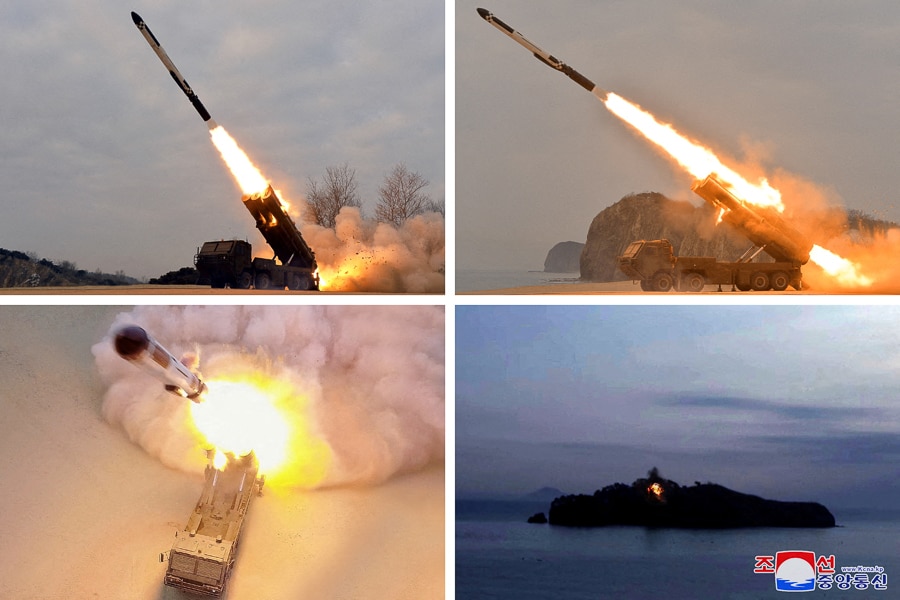
Can Joe Biden avert a crisis with North Korea?
Heavy sanctions imposed by President Joe Biden's two immediate predecessors have not pushed Kim any closer to giving up his nuclear weapons program, and a critical element usually coupled with sanctions— diplomacy—has so far been missing from Biden's approach
 A combination image shows a missile test that state media KCNA says was conducted this week at undisclosed locations in North Korea, in this photo released January 28, 2022 by North Korea's Korean Central News Agency (KCNA).
A combination image shows a missile test that state media KCNA says was conducted this week at undisclosed locations in North Korea, in this photo released January 28, 2022 by North Korea's Korean Central News Agency (KCNA).
Image: KCNA via REUTERS
WASHINGTON — After North Korea ushered in the new year with four sets of ballistic missile tests this month, the Biden administration turned to a well-thumbed page in the Washington playbook: It called for more United Nations sanctions.
China and Russia blocked the proposal last week in the U.N. Security Council. And Kim Jong Un, the leader of North Korea, appears unfazed by the threat of more U.N. and Treasury Department sanctions — he fired off two cruise missiles Tuesday and two more ballistic missiles Thursday, for a total of six weapons tests this month, equal to the number for all of last year.
“This is a deeply isolated, autarkic economy,” said John Delury, a professor of history at Yonsei University in Seoul, South Korea. “No amount of sanctions could create the pressures that COVID created in the last two years. Yet, do we see North Korea begging and saying, ‘Take our weapons and give us some aid?’ The North Koreans will eat grass.”
Heavy sanctions imposed by President Joe Biden’s two immediate predecessors have not pushed Kim any closer to giving up his nuclear weapons program, and a critical element usually coupled with sanctions — diplomacy — has so far been missing from Biden’s approach, analysts say.
©2019 New York Times News Service







